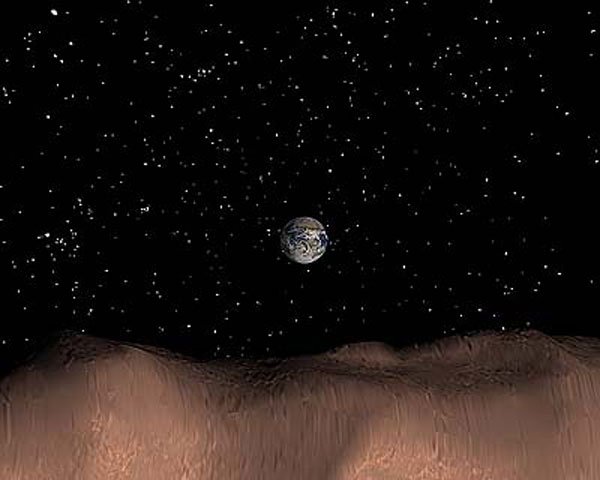Sept. 28
– Toutatis
Toutatis, a mountain-sized asteroid that looks like a peanut,
will tumble less than a million miles from Earth on Wednesday.
Although it does not threaten to hit us, it will buzz closer than
any other asteroid of its size for several decades.
Sept. 28 – Toutatis
Toutatis, a mountain-sized asteroid that looks like a peanut, will tumble less than a million miles from Earth on Wednesday. Although it does not threaten to hit us, it will buzz closer than any other asteroid of its size for several decades.
Sept. 29 – Big Bear
The Big Dipper stands in the northwest early this evening. The bowl is parallel to the horizon, and the handle extends skyward. The dipper is part of Ursa Major, the big bear. The bowl represents the bear’s hindquarters, while the handle is its tail.
Sept. 30 – Summer Triangle
Summer officially ended a week ago, but one of summer’s most visible star patterns is still high overhead in the evening sky. The Summer Triangle consists of the bright stars Deneb, Vega and Altair. The triangle is directly overhead around 8pm.
Oct. 1 – Venus and Regulus
Venus and the star Regulus team up before dawn the next few days. Venus is well up in the east at first light. Regulus, the “heart” of Leo, the lion, is just below Venus. They will line up side-by-side on Sunday.
Oct. 2 – Moon and Taurus
The Moon shoots the gap between the head and shoulders of Taurus, the bull, tonight. They rise in late evening and stand high in the southwest at dawn. As they rise, the bull’s shoulder is above the Moon. It’s represented by the dipper-shaped Pleiades.
Oct. 3 – Evening Stars
As twilight fades away this evening, the stars slowly fade in. The first stars to pop into view include yellow-orange Arcturus, fairly low in the west; ruddy Antares, even lower in the southwest, and the three stars of the Summer Triangle, high overhead.
Oct. 4 – Winter Preview
Autumn is barely under way, but you can get a preview of the winter sky this week in the hours before dawn. Taurus, the bull, is high overhead. Orion stands to its southeast, with Sirius, the sky’s brightest star, low in the south-southeast.
Oct. 5 – Moon and Saturn
The planet Saturn follows the last-quarter Moon as they ascend the eastern sky. The Moon rises before midnight, with Saturn following it more than an hour later.
University of Texas McDonald Observatory















